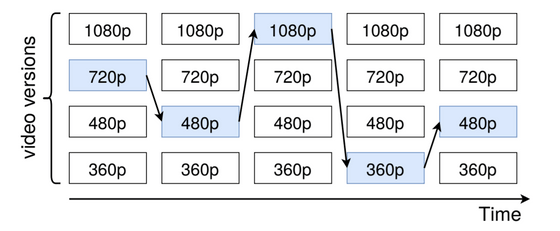What is the new algorithm 'Fugu' that greatly improves the efficiency of streaming?

Many people are refraining from going out due to the new coronavirus, and the effect is
Learning in situ: a randomized experiment in video streaming | USENIX
https://www.usenix.org/conference/nsdi20/presentation/yan
Computer scientists create a 'laboratory' to improve streaming video | Stanford School of Engineering
https://engineering.stanford.edu/magazine/article/computer-scientists-create-laboratory-improve-streaming-video

The new communication algorithm 'Fugu' was developed by the research group of
The current popular streaming distribution uses a technology called buffer-based algorithm (BBA), which aims to play video seamlessly. This is to check how much video is stored in the buffer , which is the area of the PC that temporarily stores data, and adjust the quality of the video accordingly.
For example, if the BBA determines that 'there are only 5 seconds worth of video stored on the PC,' then the BBA sends a low quality video to the PC to keep up. On the other hand, if it turns out that '15 seconds are available', the highest quality video, which takes a long time to communicate, is sent. With this method, BBA has been widely used for streaming distribution services for a long time because it can achieve the highest possible image quality while maintaining smooth video playback.

While BBA is simple, yet unsophisticated, many researchers have sought to find more efficient communication algorithms. However, most of these studies were based on machine learning done in virtual environments, and there was a problem that they might not fit well in the real Internet environment.
So Yang et al. Actually launched Puffer, which is an original free streaming distribution service, and distributed video for a total of 38.6 years to 63,508 users. We have trained a

When Yang et al. Actually examined the effects of five algorithms including Fugu in Puffe, Fugu showed excellent performance in terms of image quality and resolution, and the short duration of the image. Also, in a test that delivers video to viewers using a random algorithm, viewers who saw the video delivered via Puffer enjoyed the video for 5 to 9% longer than other algorithms. is.
Keith Winstein, co-author of the paper, said, 'We have discovered how machine learning can overcome the difference between reality and simulation. Given that this will solve many problems, It's very exciting. '
In addition, in the paper, Yang et al., 'This research shows that in order to create a learning algorithm that demonstrates robust performance on the real Internet, real-time training is performed using data from an actual streaming distribution environment. We also found that we needed an algorithm that had a sophisticated structure and simple enough to withstand such training, '' he said.Training in a practical environment is essential for developing a practical algorithm. I said that.
Related Posts:
in Video, Web Service, Posted by log1l_ks







